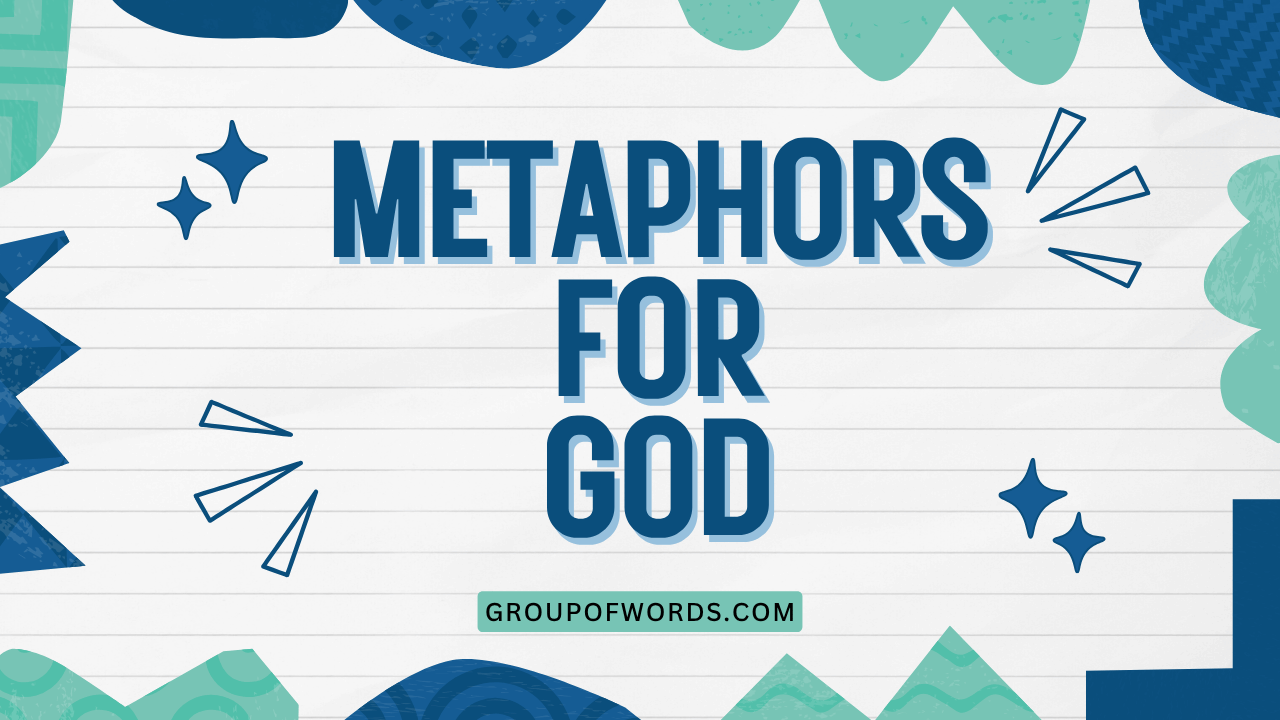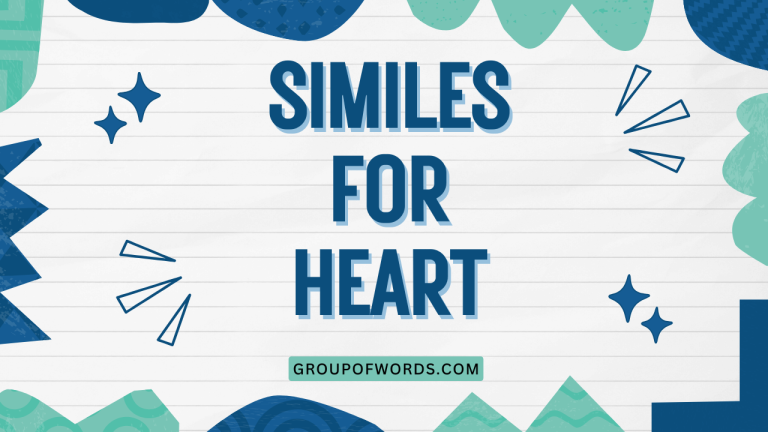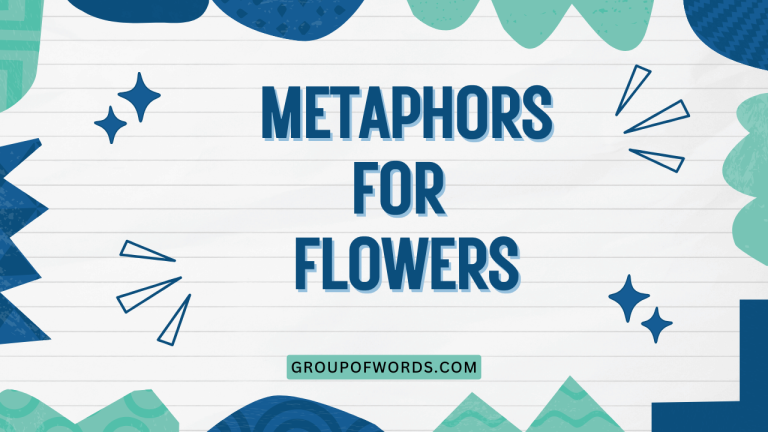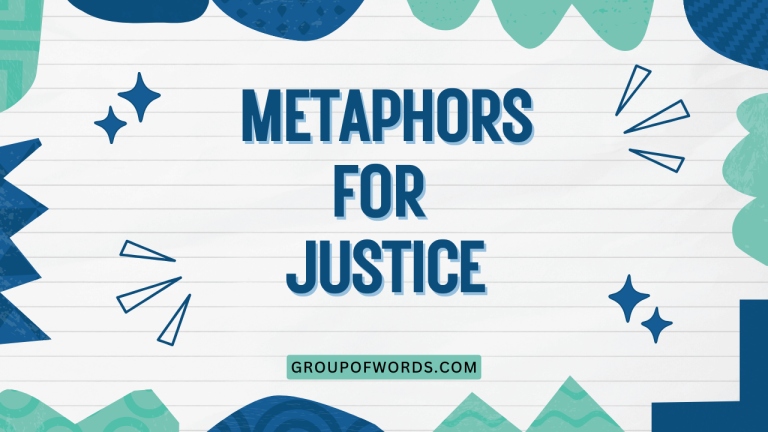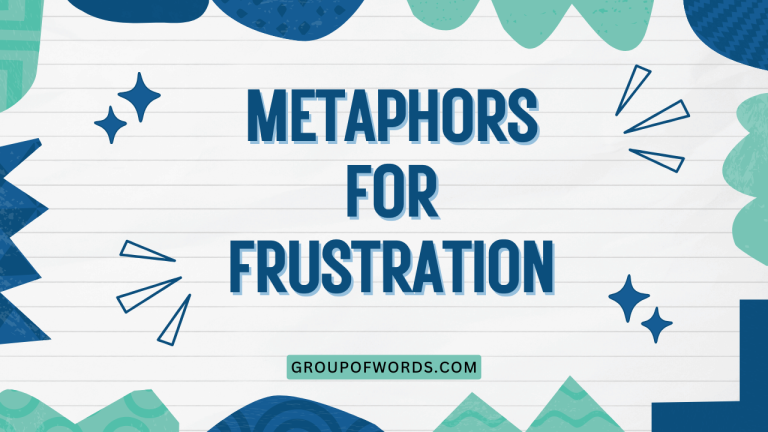Metaphors for God: A Grammatical Exploration
Understanding metaphors for God is crucial for comprehending religious texts, theological discussions, and spiritual expressions. These metaphors shape our perceptions and beliefs, influencing language and thought.
This article explores the grammatical function and diverse categories of metaphors used to describe God, providing clarity and insight for students, theologians, and anyone interested in the intersection of language and spirituality.
Table of Contents
- Introduction
- Definition of Metaphors for God
- Structural Breakdown
- Types and Categories
- Examples
- Usage Rules
- Common Mistakes
- Practice Exercises
- Advanced Topics
- FAQ
- Conclusion
Definition of Metaphors for God
A metaphor for God is a figure of speech that describes God by referring to something else, suggesting a resemblance or analogy. These metaphors are not literal descriptions but rather symbolic representations that help us understand aspects of the divine that are otherwise beyond human comprehension.
Metaphors for God function as a way to bridge the gap between the finite human experience and the infinite nature of the divine. They are essential tools for theological discourse, spiritual expression, and personal understanding of faith.
In terms of grammar, these metaphors often function as nouns or noun phrases, where God is the implied subject. The metaphor itself acts as a predicate nominative, renaming or describing God.
Verbs can also play a role, particularly when describing God’s actions using metaphorical language (e.g., “God shelters us,” where “shelters” is a metaphorical verb).
Structural Breakdown
The structure of a metaphor for God typically involves two key elements: the tenor and the vehicle. The tenor is the subject being described (in this case, God). The vehicle is the object or concept used to represent the tenor. The relationship between the tenor and vehicle is based on shared characteristics or analogous qualities.
For instance, in the metaphor “God is a shepherd,” God is the tenor, and “shepherd” is the vehicle. The shared characteristic is that both God and a shepherd provide care, guidance, and protection.
The effectiveness of a metaphor relies on the audience’s understanding of the vehicle and its ability to evoke relevant associations with the tenor. The metaphor works by transferring qualities associated with the vehicle (e.g., a shepherd’s watchfulness) to the tenor (God).
Grammatically, the structure can be represented simply as: God (Tenor) + is/acts like + Vehicle. This structure can be modified with adjectives, adverbs, and other descriptive elements to create more nuanced and complex metaphors.
Types and Categories
Metaphors for God can be categorized based on the type of imagery and concepts they draw upon. Here are some common categories:
Anthropomorphic Metaphors
Anthropomorphic metaphors attribute human characteristics, actions, or emotions to God. These metaphors make the divine more relatable and understandable by drawing on familiar human experiences.
While they can be helpful in conveying certain aspects of God’s nature, it’s important to remember that they are symbolic and not literal descriptions.
Natural Element Metaphors
Natural element metaphors use aspects of the natural world, such as light, water, fire, or rock, to represent God. These metaphors often highlight God’s power, constancy, or life-giving qualities.
They connect the divine with the tangible world, illustrating God’s presence and influence in creation.
Relational Metaphors
Relational metaphors describe God in terms of human relationships, such as father, mother, king, friend, or lover. These metaphors emphasize God’s personal connection with humanity and the nature of the relationship between the divine and the human.
Abstract Concept Metaphors
Abstract concept metaphors use abstract ideas, such as truth, justice, love, or peace, to represent God. These metaphors focus on God’s essential qualities and moral attributes.
They often require deeper reflection to fully grasp their meaning.
Examples
The following tables provide examples of metaphors for God, categorized by type.
Anthropomorphic Examples
This table showcases metaphors that use human characteristics to describe God. The examples cover a range of human roles, actions, and emotions attributed to the divine.
| Metaphor | Explanation |
|---|---|
| God is a potter. | God shapes and molds humanity, like a potter shapes clay. |
| God is a judge. | God assesses human actions and dispenses justice. |
| God is a king. | God reigns over all creation with authority and power. |
| God is a warrior. | God defends and protects his people from evil. |
| God is a healer. | God restores and makes whole those who are broken. |
| God is a shepherd. | God guides, protects, and cares for his flock. |
| God is a father. | God provides love, guidance, and discipline to his children. |
| God is a mother. | God nurtures, comforts, and cares for his children. |
| God is a teacher. | God imparts wisdom and knowledge to his followers. |
| God is a builder. | God creates and establishes foundations for life. |
| God is a gardener. | God cultivates and nurtures growth in his creation. |
| God is a watchman. | God is ever-vigilant, protecting his people from harm. |
| God is a refuge. | God provides safety and security in times of trouble. |
| God is a comforter. | God soothes and consoles those who are suffering. |
| God is a redeemer. | God rescues and restores those who are lost. |
| God is a friend. | God offers companionship and support. |
| God is a lover. | God demonstrates passionate and unwavering affection. |
| God is a provider. | God supplies all needs and sustains life. |
| God is a forgiver. | God pardons sins and offers reconciliation. |
| God is a listener. | God hears and responds to prayers and cries for help. |
| God is an artist. | God creates beauty and wonder in the world. |
| God is a dancer. | God moves with grace and rhythm throughout creation. |
| God is a storyteller. | God reveals truth and meaning through narratives. |
| God is a musician. | God creates harmony and beauty through sound. |
| God is a sculptor. | God shapes and refines individuals into their best selves. |
Natural Element Examples
This table focuses on metaphors that use elements from the natural world to describe God, highlighting attributes like power, constancy, and life-giving qualities.
| Metaphor | Explanation |
|---|---|
| God is light. | God illuminates truth and dispels darkness. |
| God is water. | God provides refreshment, cleansing, and life. |
| God is a rock. | God is a firm foundation and source of stability. |
| God is fire. | God purifies, transforms, and inspires passion. |
| God is the sun. | God is the source of warmth, light, and life. |
| God is the wind. | God’s presence is powerful, unseen, and transformative. |
| God is a storm. | God’s power is awe-inspiring and can bring both destruction and renewal. |
| God is a river. | God’s grace and blessings flow continuously. |
| God is a mountain. | God is majestic, immovable, and a place of refuge. |
| God is the earth. | God is the source of nourishment and sustenance. |
| God is a star. | God guides and illuminates the path. |
| God is the sea. | God is vast, mysterious, and holds immense power. |
| God is the desert. | God provides life and sustenance even in barren places. |
| God is the forest. | God is a place of growth, abundance, and mystery. |
| God is a seed. | God represents potential, growth, and new life. |
| God is the rain. | God provides blessings and nourishment for spiritual growth. |
| God is the snow. | God brings purity, cleansing, and a fresh start. |
| God is the ice. | God is unyielding and powerful in his justice. |
| God is the cloud. | God provides shade, protection, and guidance. |
| God is the moon. | God reflects light and provides guidance in darkness. |
| God is the dawn. | God brings hope, renewal, and a new beginning. |
| God is the twilight. | God offers a time of reflection and transition. |
| God is the valley. | God is a place of humility and growth. |
| God is the peak. | God is the ultimate goal and aspiration. |
| God is the horizon. | God represents limitless possibilities and the future. |
Relational Examples
This table explores metaphors that describe God in terms of human relationships, emphasizing the personal connection between the divine and humanity.
| Metaphor | Explanation |
|---|---|
| God is a father. | God provides love, guidance, and protection. |
| God is a mother. | God nurtures, comforts, and cares for his children. |
| God is a friend. | God offers companionship, support, and understanding. |
| God is a lover. | God demonstrates passionate, unwavering affection and commitment. |
| God is a king. | God reigns with authority, justice, and compassion. |
| God is a shepherd. | God guides, protects, and cares for his flock. |
| God is a teacher. | God imparts wisdom, knowledge, and understanding. |
| God is a counselor. | God provides guidance, wisdom, and support in times of trouble. |
| God is a protector. | God shields and defends his people from harm. |
| God is a savior. | God rescues and delivers his people from danger and destruction. |
| God is a redeemer. | God restores and brings back those who are lost or alienated. |
| God is a comforter. | God soothes and consoles those who are suffering or grieving. |
| God is a guide. | God leads and directs his people on the right path. |
| God is a partner. | God works alongside his people in accomplishing his purposes. |
| God is a witness. | God observes and knows all things, and testifies to the truth. |
| God is a neighbor. | God shows compassion and care for those in need. |
| God is a parent. | God provides unconditional love, support, and discipline. |
| God is a sibling. | God offers solidarity and companionship in shared experiences. |
| God is a spouse. | God represents a covenant relationship of love and faithfulness. |
| God is a servant. | God humbly serves and cares for his people’s needs. |
| God is a leader. | God guides and directs his people with wisdom and authority. |
| God is a peacemaker. | God brings reconciliation and harmony in relationships. |
| God is a healer. | God restores and makes whole those who are broken or wounded. |
| God is a refuge. | God provides safety and security in times of trouble. |
| God is a strength. | God provides power and resilience in times of weakness. |
Abstract Concept Examples
This table presents metaphors that use abstract ideas to describe God, focusing on his essential qualities and moral attributes.
| Metaphor | Explanation |
|---|---|
| God is love. | God embodies the essence of unconditional affection and compassion. |
| God is truth. | God is the ultimate source of reality and honesty. |
| God is justice. | God embodies fairness, righteousness, and impartiality. |
| God is peace. | God brings harmony, reconciliation, and serenity. |
| God is wisdom. | God possesses profound insight, knowledge, and understanding. |
| God is mercy. | God shows compassion, forgiveness, and kindness. |
| God is grace. | God bestows unearned favor, blessings, and gifts. |
| God is hope. | God inspires optimism, confidence, and expectation of good. |
| God is faith. | God is the object of trust, belief, and reliance. |
| God is goodness. | God embodies moral excellence and virtue. |
| God is holiness. | God is sacred, pure, and set apart. |
| God is eternity. | God exists without beginning or end, transcending time. |
| God is infinity. | God is boundless, limitless, and without measure. |
| God is omniscience. | God knows everything, past, present, and future. |
| God is omnipotence. | God is all-powerful and capable of anything. |
| God is omnipresence. | God is present everywhere at all times. |
| God is righteousness. | God is morally upright, just, and virtuous. |
| God is forgiveness. | God pardons sins and offers reconciliation. |
| God is compassion. | God feels sympathy and empathy for human suffering. |
| God is patience. | God is tolerant, understanding, and slow to anger. |
| God is humility. | God is modest, selfless, and considerate of others. |
| God is courage. | God acts with bravery, strength, and determination. |
| God is loyalty. | God is faithful, committed, and unwavering in his promises. |
| God is generosity. | God is giving, benevolent, and provides abundantly. |
| God is joy. | God is the source of happiness, delight, and contentment. |
Usage Rules
When using metaphors for God, it’s crucial to consider the following rules:
- Context is Key: The appropriateness of a metaphor depends on the context. Some metaphors may be suitable for personal reflection but less appropriate for formal theological discussions.
- Cultural Sensitivity: Be mindful of cultural differences and sensitivities when using metaphors for God. A metaphor that resonates in one culture may not be well-received in another.
- Avoid Literal Interpretation: Emphasize that metaphors are symbolic representations and not literal descriptions. Make it clear that God is not literally a shepherd or a rock, but that these images convey certain qualities.
- Consistency: Maintain consistency in the use of metaphors. Avoid mixing metaphors in a way that creates confusion or contradiction.
- Clarity: Choose metaphors that are clear and easily understood by your audience. Avoid obscure or overly complex metaphors that may hinder comprehension.
- Respect: Use metaphors respectfully and avoid language that could be offensive or demeaning.
Common Mistakes
Here are some common mistakes to avoid when using metaphors for God:
| Incorrect | Correct | Explanation |
|---|---|---|
| God is literally a shepherd. | God is like a shepherd, caring for his flock. | Avoid literal interpretations of metaphors. |
| God is a rock and a flowing river, but also a gentle breeze of fire. | God is a rock, providing a firm foundation. God is like a flowing river, offering refreshment. | Avoid mixing metaphors in a confusing way. |
| God is a quantum entanglement. | God is the source of all creation. | Choose metaphors that are accessible and understandable to your audience. |
| God is a lazy bum. | God is a source of unwavering strength. | Use respectful and appropriate language. |
Practice Exercises
Test your understanding of metaphors for God with these exercises.
Exercise 1: Identifying Metaphors
Identify the metaphor for God in each sentence and explain what it means.
| Question | Answer |
|---|---|
| 1. God is the light of the world. | Metaphor: Light. Explanation: God illuminates truth and dispels darkness. |
| 2. God is our refuge and strength. | Metaphor: Refuge and strength. Explanation: God provides safety and resilience in times of trouble. |
| 3. God is the potter, we are the clay. | Metaphor: Potter. Explanation: God shapes and molds humanity. |
| 4. God is a mighty fortress. | Metaphor: Fortress. Explanation: God provides protection and security. |
| 5. God is a loving parent. | Metaphor: Parent. Explanation: God provides unconditional love and support. |
| 6. God is the bread of life. | Metaphor: Bread. Explanation: God sustains and nourishes spiritual life. |
| 7. God is the living water. | Metaphor: Water. Explanation: God quenches spiritual thirst and provides life. |
| 8. God is the Prince of Peace. | Metaphor: Prince. Explanation: God brings harmony and reconciliation. |
| 9. God is the ultimate healer. | Metaphor: Healer. Explanation: God restores and makes whole those who are broken. |
| 10. God is the Good Shepherd. | Metaphor: Shepherd. Explanation: God guides, protects, and cares for his flock. |
Exercise 2: Categorizing Metaphors
Categorize each metaphor for God as anthropomorphic, natural element, relational, or abstract concept.
| Metaphor | Category |
|---|---|
| 1. God is love. | Abstract Concept |
| 2. God is a shepherd. | Relational |
| 3. God is light. | Natural Element |
| 4. God is a judge. | Anthropomorphic |
| 5. God is a friend. | Relational |
| 6. God is truth. | Abstract Concept |
| 7. God is a rock. | Natural Element |
| 8. God is a warrior. | Anthropomorphic |
| 9. God is grace. | Abstract Concept |
| 10. God is the sun. | Natural Element |
Exercise 3: Creating Metaphors
Create your own metaphor for God and explain its meaning.
| Question | Answer |
|---|---|
| 1. Create a metaphor for God related to hope. | God is the dawn breaking after a long night. Explanation: God brings renewed hope and a fresh start after periods of darkness or despair. |
| 2. Create a metaphor for God related to guidance. | God is a compass, always pointing us towards our true north. Explanation: Like a compass, God provides consistent direction and helps us stay on course in life. |
| 3. Create a metaphor for God related to strength. | God is the anchor that holds us steady in the storms of life. Explanation: God provides stability and prevents us from being swept away by challenges. |
| 4. Create a metaphor for God related to comfort. | God is the warm blanket on a cold winter’s night. Explanation: God provides comfort, warmth, and security in times of need. |
| 5. Create a metaphor for God related to healing. | God is the balm that soothes our wounded souls. Explanation: God heals emotional and spiritual wounds, bringing restoration and peace. |
| 6. Create a metaphor for God related to protection. | God is the shield that defends us from harm. Explanation: God protects us from physical, emotional, and spiritual dangers. |
| 7. Create a metaphor for God related to wisdom. | God is the library filled with endless knowledge and understanding. Explanation: God is the ultimate source of wisdom and insight. |
| 8. Create a metaphor for God related to forgiveness. | God is the eraser that wipes away our mistakes. Explanation: God forgives our sins and offers a clean slate. |
| 9. Create a metaphor for God related to love. | God is the sun that shines on everyone, regardless of their worthiness. Explanation: God’s love is all-encompassing and unconditional. |
| 10. Create a metaphor for God related to presence. | God is the air we breathe, always present and essential for life. Explanation: God is always with us, sustaining and vital to our existence. |
Advanced Topics
For advanced learners, consider exploring the following topics:
- Theological Implications: Explore how different metaphors for God influence theological doctrines and interpretations of scripture.
- Cultural Variations: Research how metaphors for God vary across different cultures and religious traditions.
- Metaphor and Gender: Analyze the use of gendered metaphors for God and their impact on perceptions of the divine.
- The Limits of Metaphor: Consider the limitations of using metaphors to describe God and the potential for misunderstanding.
FAQ
Here are some frequently asked questions about metaphors for God:
- Why do we use metaphors to describe God?
Metaphors are used because God is often considered to be beyond human comprehension. Metaphors provide a way to express the inexpressible by relating God to familiar concepts and experiences, allowing us to grasp aspects of the divine that would otherwise be inaccessible.
- Are metaphors for God literally true?
No, metaphors for God are not literally true. They are symbolic representations that highlight certain qualities or attributes of God. It’s important to remember that they are analogies, not literal descriptions.
- Can any metaphor be used to describe God?
While many metaphors can be used to describe God, it’s important to choose metaphors that are appropriate, respectful, and consistent with theological understanding. Some metaphors may be misleading or offensive. Careful consideration should be given to the context and audience.
- How do different metaphors for God affect our understanding of faith?
Different metaphors can shape our understanding of faith by emphasizing different aspects of God’s nature and character. For example, the metaphor of God as a loving parent emphasizes God’s care and compassion, while the metaphor of God as a judge emphasizes God’s justice and righteousness. The metaphors we use can influence our relationship with the divine and our understanding of religious teachings.
- What are the limitations of using metaphors for God?
The primary limitation is that metaphors are inherently incomplete and imperfect. No single metaphor can fully capture the complexity and mystery of God. Over-reliance on a particular metaphor can lead to a distorted or limited understanding of the divine. It is important to use a variety of metaphors and to remember that they are only symbolic representations.
- How can I better understand metaphors for God in religious texts?
To better understand metaphors for God, consider the context in which they are used, the cultural background of the text, and the intended audience. Research the meaning and symbolism of the vehicle used in the metaphor. Consult theological resources and commentaries for deeper insights.
- Is it possible to create new and meaningful metaphors for God?
Yes, it is possible to create new metaphors for God. However, it is important to do so with careful consideration and respect for established theological traditions. New metaphors should be grounded in scripture and consistent with core beliefs. They should also be relevant and meaningful to contemporary audiences.
- How do metaphors for God differ across different religions?
Metaphors for God vary significantly across different religions, reflecting their distinct beliefs, cultural contexts, and spiritual practices. For example, some religions emphasize metaphors related to nature and creation, while others focus on metaphors related to human relationships or abstract concepts. Studying these variations can provide valuable insights into the diversity of religious thought and expression.
Conclusion
Metaphors for God are powerful tools for understanding and expressing the divine. By recognizing the different types of metaphors, understanding their structure, and using them thoughtfully, we can gain deeper insights into the nature of God and our relationship with the divine.
Remember that metaphors are symbolic representations, and no single metaphor can fully capture the mystery and complexity of God. Continue to explore and reflect on the rich tapestry of metaphors used to describe God throughout history and across cultures.
